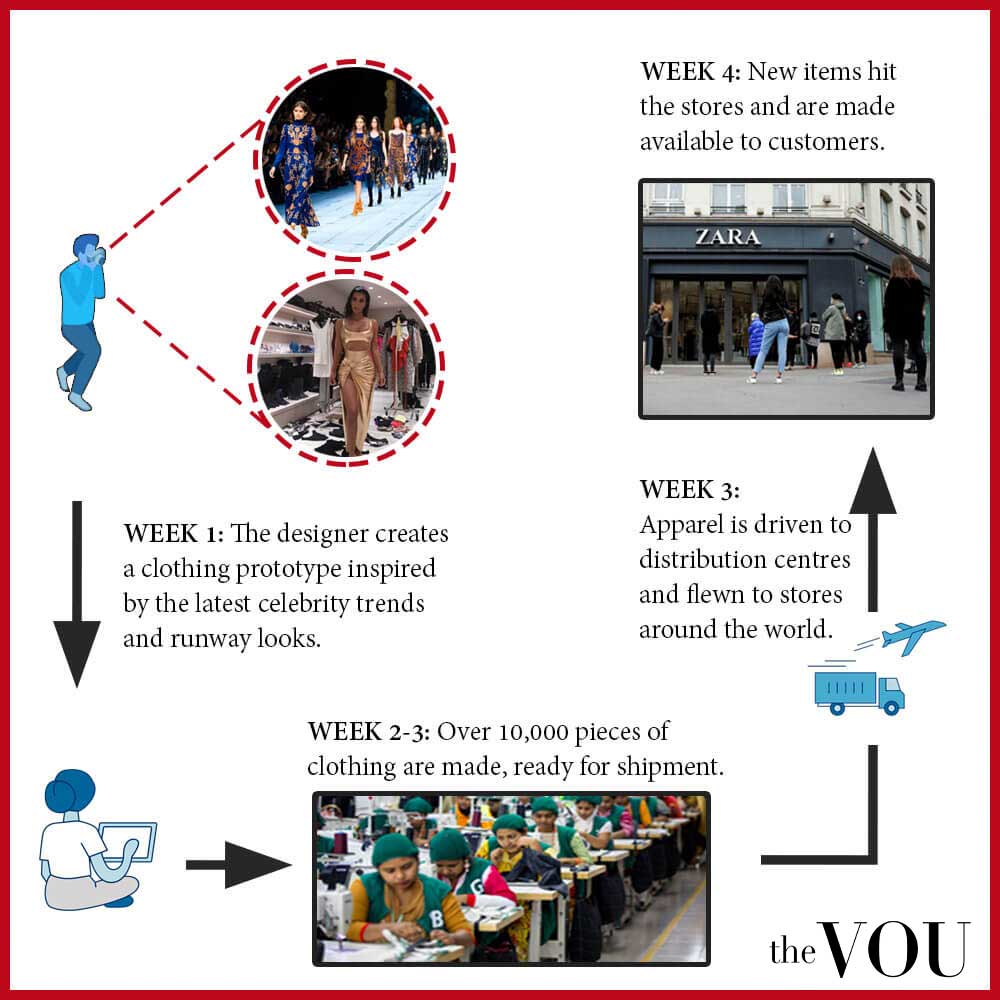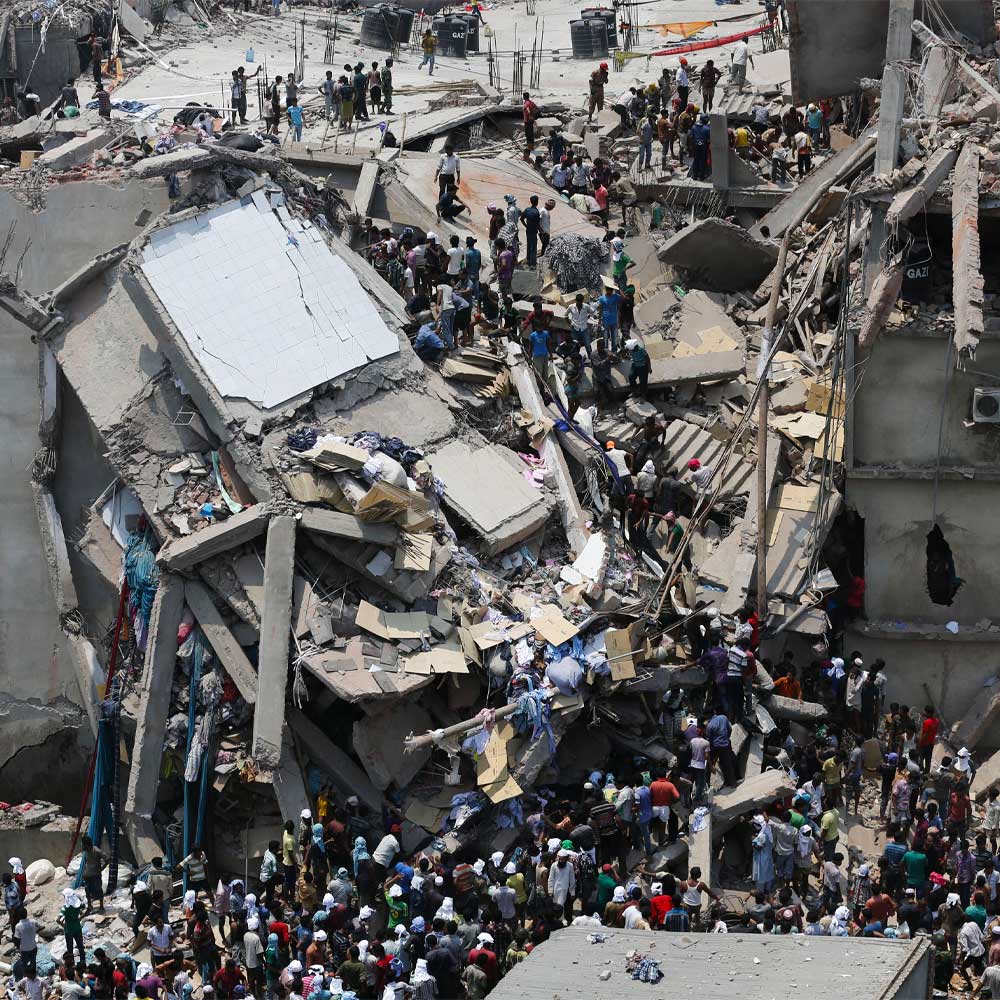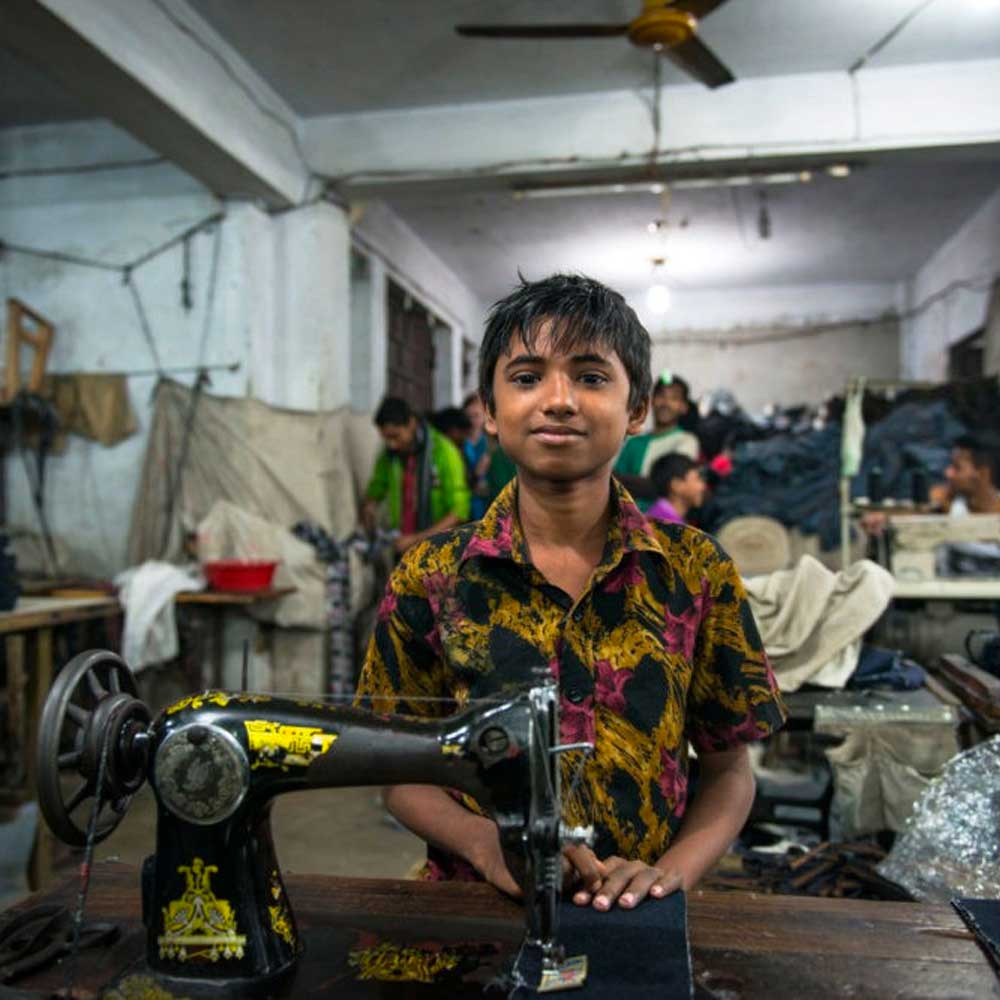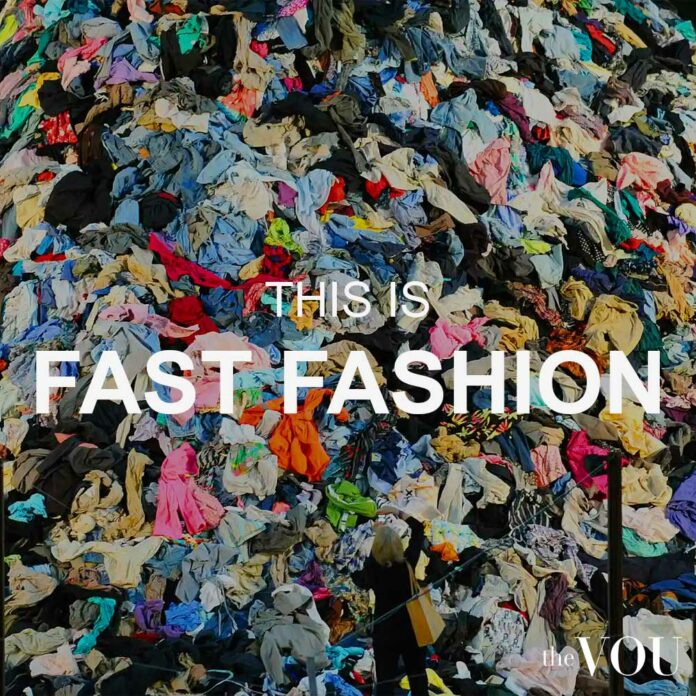Fast fashion is the catalyst of contemporary fashion, relentlessly focusing on the latest fashion trends, rapid manufacturing, and agile supply chains.
More than an automatic way of manufacturing and retailing clothing, footwear, and accessories, fast fashion impacts the industry at all levels, from design to seasons and the latest trends.
In this comprehensive guide, we’ll explain fast fashion and its positive aspects, such as ‘fashion for all,’ and its negative aspects, such as pollution, waste, and modern slavery.
We’ll explore the difference between fast fashion, ready-to-wear, and haute couture and conclude with the ten worst fast-fashion companies.
What is Fast Fashion?
Fast Fashion is a fashion business model in which fashion designs move from catwalks to fashion retail stores at the most affordable price points in the shortest possible time.
The Fast-Fashion business model starts with clothing manufacturing giants that track emerging fashion trends and buyers’ shifting preferences.
Thanks to these insights, tight-knit relationships with suppliers, and streamlined supply chains, products are created and delivered at neck-breaking speeds.
Zara, for instance, takes a maximum of 15 days to move a design from concept to retail stores.

Fast Fashion Definitions
Several fast fashion definitions describe the concept, each with slightly different takes:
- “Fast fashion is inexpensive clothing produced rapidly by mass-market retailers in response to the latest trends.” – Oxford Languages.
- “Fast fashion is an approach to the design, creation, and marketing of clothing that emphasizes making fashion trends quickly and cheaply available to consumers.” – Merriam Webster.
- “Fast fashion is the term used to describe clothing designs that move quickly from the catwalk to stores to take advantage of trends.” – Investopedia.
- “Fast fashion has three main components from the consumer’s perspective: cheap, trendy, and disposable.” – Healthy Human.
- “Fast fashion is cheap, trendy clothing that samples ideas from the catwalk or celebrity culture and turns them into garments in high street stores at breakneck speed to meet consumer demand.” – Good On You.
- “Fast fashion is a design, manufacturing, and marketing method focused on rapidly producing high volumes of clothing. Garment production utilizes trend replication and low-quality materials to bring inexpensive styles to the public.” – The Good Trade.
The Origin of Fast Fashion
The origin of Fast Fashion goes back to the post-WWII manufacturing boom and the “throwaway” culture that gained prominence in the 1960s.
Brands like Zara and H&M refined this approach in the late 20th and early 21st centuries, accelerating the pace of the fashion cycle.
According to Grand View Research, the fast-fashion market is expected to reach $43.6 billion by 2029, growing at a CAGR of 5.5% from 2022 to 2029.
Fast Fashion vs Ready-to-Wear vs Haute Couture
Fast Fashion prioritizes affordability and immediate availability but raises questions about quality and ethics.
On the other hand, Ready-to-Wear occupies the middle ground by offering higher-quality apparel at moderate price points.
Finally, Haute Couture represents the apex of craftsmanship and exclusivity, but at a price point that only a select few can afford.
Fast Fashion’s 4 Core Problems
The fast-fashion business model causes problems, such as working conditions resembling modern slavery or the use of toxic dyes and unsustainable materials, creating mountains of waste and pollution.
Of all the problems caused by fast fashion, four are of paramount importance, impacting hundreds of millions of people worldwide.
1. Copyright Issues
Stealing designs is at the core of the fast-fashion business model.
The fast fashion business model begins here, with the most popular fast fashion brands copying styles and designs.
“Nowadays, anyone, anywhere, could spot a fresh style, copy and sell it, without consequences or having to follow the classic hierarchy of fashion,” – Rebecca Minkoff.
Social media has accelerated the fast fashion model by making it easier for fast fashion brands to ‘steal fresh looks that sell.’
Whenever a celebrity or a fashion influencer showcases a unique designer piece on social media, fast-fashion spies’ copy’ the look and send it for approval.
Compared to a designer label, which requires five to six months to design, manufacture, and launch a new collection, fast fashion brands replicate the same style and store it in less than a month.
Quick to copy, mass-manufacture, and ship worldwide, fast fashion giants market the latest designs before the original creators do.
Even worse, as several fast fashion companies target the same design, the original creator is lost.
2. Modern Slavery
While garment workers are paid well below the minimum wage, fast-fashion companies like Topshop and Fashion Nova earn millions by mass-producing cheap clothes.
In the documentary The True Cost, author and journalist Lucy Siegle summed it up perfectly:
“Fast fashion isn’t free. Someone somewhere is paying.”
The actual cost of fast fashion was revealed in 2013 when the Rana Plaza – a clothing manufacturing complex in Bangladesh – collapsed, killing over 1,000 workers.

Every piece of clothing, garment, footwear, accessory, and apparel, from production to fashion retail, is chosen through the lens of reducing costs.
According to a survey by Fashion Checker, 93% of the investigated fast-fashion brands fail to pay garment workers the minimum living wage.
The human cost of fast fashion is immense; it impacts garment workers who work in poor conditions and even dangerous environments for low wages without the most basic human rights.
From farmers to factory workers, people in fast fashion are exposed to toxic chemicals and brutal working conditions that devastate their physical and mental health, as highlighted by the documentary “The True Cost. ”
Fast fashion brands have moved production to developing countries to keep manufacturing costs low.
While highly unethical and inhuman, child labor and modern slavery are no longer in the spotlight, allowing fast fashion giants to operate without being scrutinized by the media.

Harmful chemicals such as benzothiazole – known to cause several types of cancer and respiratory illnesses – are used by fast fashion companies.
According to the Environmental Health Journal, fast fashion textile dyeing discharged into local waters contains heavy metals that adversely impact the health of workers, animals, and nearby residents.
If not killed by chemical exposure, factory workers work long hours with unfair wages and suffer mental and physical abuse.
3. Throwaway Culture
As a result of the throwaway culture, compared to 20 years ago, we purchase twice as much clothing while keeping them half as long.
Fashion experts still debate what came first: consumers’ desire for fresh looks or fast fashion giants convincing shoppers that they’re out of trends, month after month.
Regardless, with increasing production rates and questionable supply chains, consumers and fast fashion brands ultimately lose.
With 20% of the garments discarded as faulty on the manufacturing line and 90% thrown away by consumers in less than a year, fast fashion is killing the planet.
According to The Guardian, one in three young women, the most significant segment of fast-fashion consumers, consider garments worn once or twice as old.
Consumers are brainwashed by fast fashion companies that exploit the planned obsolescence strategy, as Guiltinan describes.
More than any other industry, fashion embraces obsolescence as a primary goal; fast fashion raises the stakes.
Fast fashion products are intentionally low quality so consumers have to repurchase them to keep buying the latest trends.
As a result, consumers discard garments quickly and create unnecessary waste, a process that’s now known as the throwaway culture.
According to The Guardian, over 50 million kilograms of unused clothing end up in landfills annually in Australia alone and 11 million tons in the US.
4. Pollution and Waste
Beyond the ripping off of others’ work, fast fashion creates severe ecological problems.
The pressure to reduce costs and speed production translates into ignoring environmental laws.
Fast fashion uses cheap and toxic textile dyes, turning the fashion industry into one of the largest polluters of clean water globally, after agriculture.
Over the years, Greenpeace has been pressuring fast-fashion brands to remove toxic chemicals from their supply chains, with little success.
Cheap fabrics like polyester – a popular textile – are derived from fossil fuels.
Fossil fuel textiles contribute to carbon emissions, global warming, and shedding microfibres in washing water, polluting oceans and killing marine species.
Even “natural” fabrics become a problem at the scale fast fashion demands.
For example, conventional cotton growers from developing countries use enormous quantities of water and pesticides, depleting and polluting the environment.
Drought risks, resource competition (between companies and local communities), loss of biodiversity, and soil quality are just a few of the problems caused by fast fashion.
Then, there’s deforestation to make room for more cotton fields and farming for leather and leather processing plants, further impacting the environment with hundreds of chemicals required to tan animal hides.
A recent fashion report published in MDPI Journal highlighted that over 87 percent of fast fashion brands are sourcing textiles from China, India, Pakistan, and Turkey, with severe environmental consequences.
The textiles are produced in the most unsustainable conditions, depleting the environment of resources while displacing or poisoning the local communities.
Of all the fast fashion giants investigated, only Zara and H&M had proper clothing waste management and recycling policies for unwanted garments.
Fast fashion also impacts animals, as toxic dyes and microfibres released into the waterways are ingested by land and marine life with devastating effects.
Animal products such as leather, fur, and wool in fashion reveal endless scandals of animal exploitation and abuse.
Worst Fast Fashion Companies
Boohoo
British fashion retailer Boohoo has been growing fast over the past decade.
While the brand seems to make sustainability-related promises, it does little to improve its social and environmental spheres.
According to a recent Sunday Times investigation, workers in a Leicester, UK factory were paid as little as £3.50 per hour, far below the national minimum wage.
Imagine how much they pay their workers in India or Bangladesh…
The Environmental Audit Committee published a report naming Boohoo as one of the least sustainable fashion brands in the UK.
SheIn
With over 20 million followers on Instagram, Chinese brand Shein has become one of the most popular fast-fashion brands of 2024.
Shein adds over 500 cheap clothing pieces to its website daily, contributing to the throwaway culture and environmental damage.
Shein doesn’t share any information about where the clothes are made or its supply chain while assuring that it doesn’t use forced or child labor.
In 2020, the brand faced worldwide criticism for selling necklaces in the shape of a swastika and Islamic prayer mats on its website.
Zara
Zara is a Spanish fast-fashion brand that uses recycled packaging and a textile recycling program.
Yet Zara is not transparent about the resources used to produce its clothes or its greenhouse gas emissions.
The company continues to underpay its garment workers for the minimum living wage.
In 2017, a Zara customer from Istanbul found a secret message in a piece of clothing he had recently bought.
The follow-up investigation revealed that these were written by garment workers who claimed they had to work for free before the manufacturer producing clothes for Zara went bankrupt.
Old Navy
Old Navy is an American fast fashion clothing retailer owned by Gap Inc., with over 1,000 stores worldwide.
In 2013, Old Navy was accused of working with factories employing girls as young as 12.
In partner factories, workers were beaten, and pregnant women were fired or forced to work 100-plus hours a week.
As Old Navy’s supply chain is not certified by labor standards, it is difficult to determine whether these unethical practices have stopped.
Primark
Irish company Primark is Europe’s largest fast-fashion retailer. It outsources manufacturing and, thus, has no control over the workers’ conditions or wages.
Even though Primark states its factories follow a Code of Conduct, there is no evidence that workers receive minimum pay or work in safe conditions.
Customers have found “SOS” messages in Primark clothing, written by Chinese inmates working in garment factories in inhumane conditions for 15 hours daily.
While the company is a member of the Sustainable Apparel Coalition, there is no information on how it reduces its environmental footprint.
H&M
H&M is the most famous Swedish brand and the second-largest fast-fashion retailer in the world.
A 2018 investigation unveiled that the company failed to pay 850,000 garment workers the minimum living wage, while most of its female workers complained of constant sexual harassment.
The brand was also accused of turning a blind eye to the plight of garment workers who denounced inhumane working conditions leading to the deaths of more than 100 people.
Common Questions Asked About Fast Fashion Answered
What is a Fast Fashion Example?
Zara and H&M are two of the most prominent fast-fashion examples. They operate a clothing business model built around creating cheap and trendy clothing by copying high-end designs, manufacturing them, and sending them to retail stores globally in less than a week.
What 3 Things Define Fast Fashion?
Fast fashion is defined by three aspects: cheap, trendy, and disposable. This encourages shoppers to update their wardrobes regularly throughout the year to keep up with the latest fashion trends.
Is Fast Fashion Ethical?
Fast fashion is not ethical. As one of the biggest polluters in the world, it is unethical and unsustainable, damaging people, animals, and the environment.
Who Buys Fast Fashion?
The younger cohorts—millennials and Gen Z—form the backbone of Fast Fashion’s consumer base. Data from Euromonitor International indicates that 37% of shoppers aged 18-34 prefer Fast Fashion outlets, seeking affordability and trendiness.
Key Takeaways
Granted, with price tags straight off the catwalks of the world’s fashion capitals, not many people can afford a fashion stylist or designer clothes.
‘Purse-friendly’ fast fashion always comes at a cost, somewhere else…modern slavery or destroying the environment with cheap garments.
Unfortunately, the world’s insatiable appetite for fashion, the latest trends, and the desire to copy celebrities will not go away.
As the former Topshop brand director put it:
“People see a celebrity wearing something and want it right away. As long as there’s demand, we make it”
Until the mid-1950s, the fashion industry ran on four seasons a year: fall, winter, spring, and summer.
Nowadays, fast fashion brands produce over 50 “micro-seasons” a year, or at least one new “collection” per week.
The underlying issue with fast fashion is the speed at which it is produced, putting massive pressure on people and the environment.
If genuine and not greenwashing, recycling and small eco or vegan clothing ranges are not enough to counter the throwaway culture.
Because of pollution and natural resource depletion, the fast fashion system needs to be changed to a more circular model.
Society’s consumer-centric obsession with the clothing industry will make quitting hard, but with better alternatives, it is possible.
The clothes can be produced in mindful manufacturing, by vertically integrated in-house production, with fair labor rights, and from natural materials.
Slow fashion – long-lasting garments made sustainably and circularly – is the only way forward.
With over twenty years of front-row fashion and styling events, collabs with haute-couture houses, and a PhD in Luxury Fashion, Laurenti is an expert in crafting personalised looks that depict old-money sophistication.
After years of managing hundreds of fashion brands from London's office of a global retailer, Mandy has ventured into freelancing. Connected with several fashion retailers and media platforms in the US, Australia, and the UK, Mandy uses her expertise to consult for emerging fashion brands create top-notch content as an editorial strategist for several online publications.
Currently, the community manager of Platini Jeans - Los Angeles, Betzaida Ruiz is a seasoned fashion, beauty, and lifestyle author with expertise as a personal shopper for 'Personaling' Spain and 'Personaling' Venezuela, and editorial contributions for L'Oréal, Escales Paris, Origins, AVA9 Australia, Beauty Blender, Rosegal, Dresslily, Germaine de Capuccini, Stileo, Beauty Check, Ollia Tzarina, Herbolario Rosana, Perfumerias Laguna, GoldSea Swimwear, and of course, The VOU.


